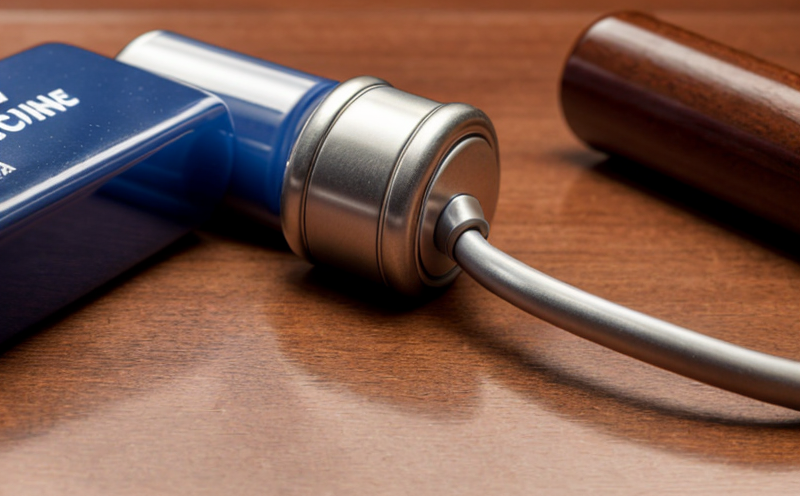Healthcare Product Regulatory Certifications: A Comprehensive Guide
The healthcare industry is one of the most regulated industries globally, with various countries having their own set of laws and regulations governing the manufacture, marketing, and sale of medical devices, pharmaceuticals, and other healthcare products. To ensure compliance with these regulations, manufacturers need to obtain necessary regulatory certifications for their products.
What are Regulatory Certifications?
Regulatory certifications are documents that confirm a product meets specific regulatory requirements set by countries or international organizations. These certifications provide assurance to governments, consumers, and stakeholders that the product is safe, effective, and compliant with local laws and regulations. Manufacturers can obtain various types of regulatory certifications for their products, including:
FDA Clearance (USA)
CE Marking (Europe)
ISO Certifications (International Organization for Standardization)
Health Canada Certificate (Canada)
TGA Certificate (Australia)
Types of Regulatory Certifications:
Medical Device Regulations: Medical devices such as surgical instruments, implantable devices, and diagnostic equipment require regulatory certifications like FDA 510(k) clearance or CE marking. These certifications ensure that the device meets safety and performance standards.
Pharmaceutical Regulations: Pharmaceutical products like drugs, vaccines, and biologics need to obtain regulatory certifications from countries where they are intended for sale. Examples of regulatory certifications include FDA approval in the USA, EMA certification in Europe, or PMDA certification in Japan.
Benefits of Regulatory Certifications:
Enhance market access and competitiveness
Increase consumer confidence and trust
Ensure compliance with local laws and regulations
Reduce risk of product recalls and litigation
Improve product safety and efficacy
Now lets dive into two detailed paragraphs explaining the requirements for FDA clearance in the USA and CE marking in Europe:
FDA Clearance (USA)
To obtain FDA clearance, manufacturers must submit a 510(k) premarket submission to demonstrate that their device is substantially equivalent to an existing device on the market.
The 510(k) process involves:
Identifying a predicate device (an existing device on the market)
Conducting a risk analysis and hazard assessment
Gathering clinical data and testing results
Preparing and submitting the 510(k) application
Responding to FDA reviewer comments and queries
The FDA review process typically takes several months, but can take longer in some cases.
Once cleared, manufacturers must follow post-market requirements, including:
Reporting adverse events and complaints
Participating in recalls or corrective actions
Complying with labeling and advertising regulations
CE Marking (Europe)
To obtain CE marking, manufacturers must comply with EU directives, such as the Medical Devices Regulation (MDR) and the In Vitro Diagnostic Medical Devices Regulation (IVDR).
The CE marking process involves:
Identifying relevant EU directives and regulations
Conducting a risk analysis and hazard assessment
Gathering technical documentation, including design specifications and manufacturing processes
Preparing and submitting a declaration of conformity to the notified body
Responding to notified body reviewer comments and queries
The CE marking process typically takes several weeks or months, but can take longer in some cases.
Once certified, manufacturers must follow post-market requirements, including:
Reporting adverse events and complaints
Participating in recalls or corrective actions
Complying with labeling and advertising regulations
Now lets move on to the QA section:
Q: What are the differences between FDA clearance and CE marking?
A: FDA clearance is specific to the USA, while CE marking applies to the European Union. The processes for obtaining these certifications differ in terms of documentation requirements, review times, and post-market obligations.
Q: Do I need to obtain regulatory certifications if Im selling my product only online?
A: Even if youre selling your product online, its essential to comply with local laws and regulations regarding medical devices or pharmaceuticals. If your product is intended for use in a specific country or region, youll likely need to obtain the relevant regulatory certification.
Q: How long does the process of obtaining regulatory certifications take?
A: The length of time required to obtain regulatory certifications varies depending on the type of product and the country where its intended for sale. Generally, the FDA clearance process takes several months, while CE marking can take several weeks or months.
Q: What are some common mistakes manufacturers make when obtaining regulatory certifications?
A: Some common mistakes include:
Insufficient documentation
Failure to comply with post-market requirements
Delayed submissions
Inadequate risk analysis and hazard assessment
In conclusion, regulatory certifications play a vital role in ensuring that healthcare products meet safety and performance standards. Manufacturers must understand the specific regulations and requirements for their products and countries where theyre intended for sale. By doing so, manufacturers can ensure compliance, reduce risks, and increase market access.
Sources:
FDA (2022). Medical Device Regulations.
EU Commission (2022). Medical Devices Regulation.
ISO (2022). Quality Management Systems Requirements.
Health Canada (2022). Medical Devices Regulations.
TGA (2022). Australian Register of Therapeutic Goods.

































